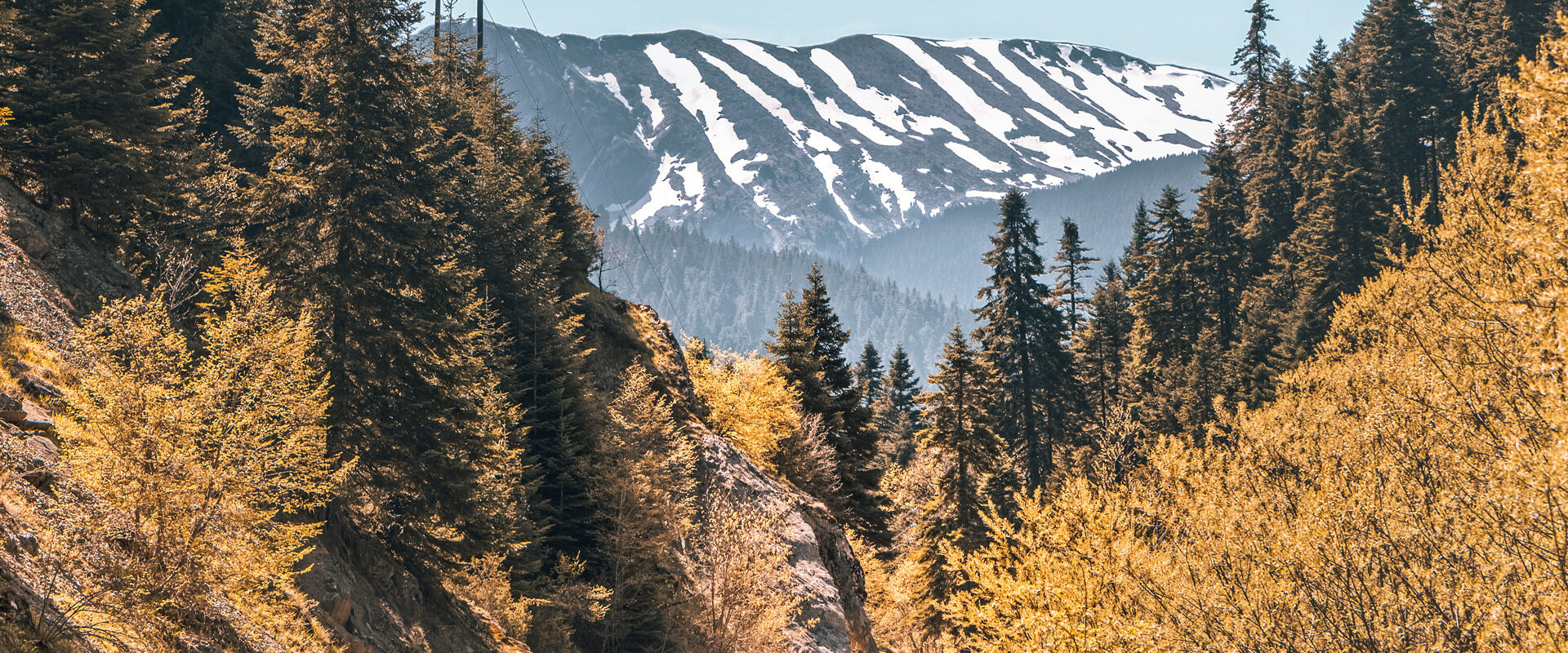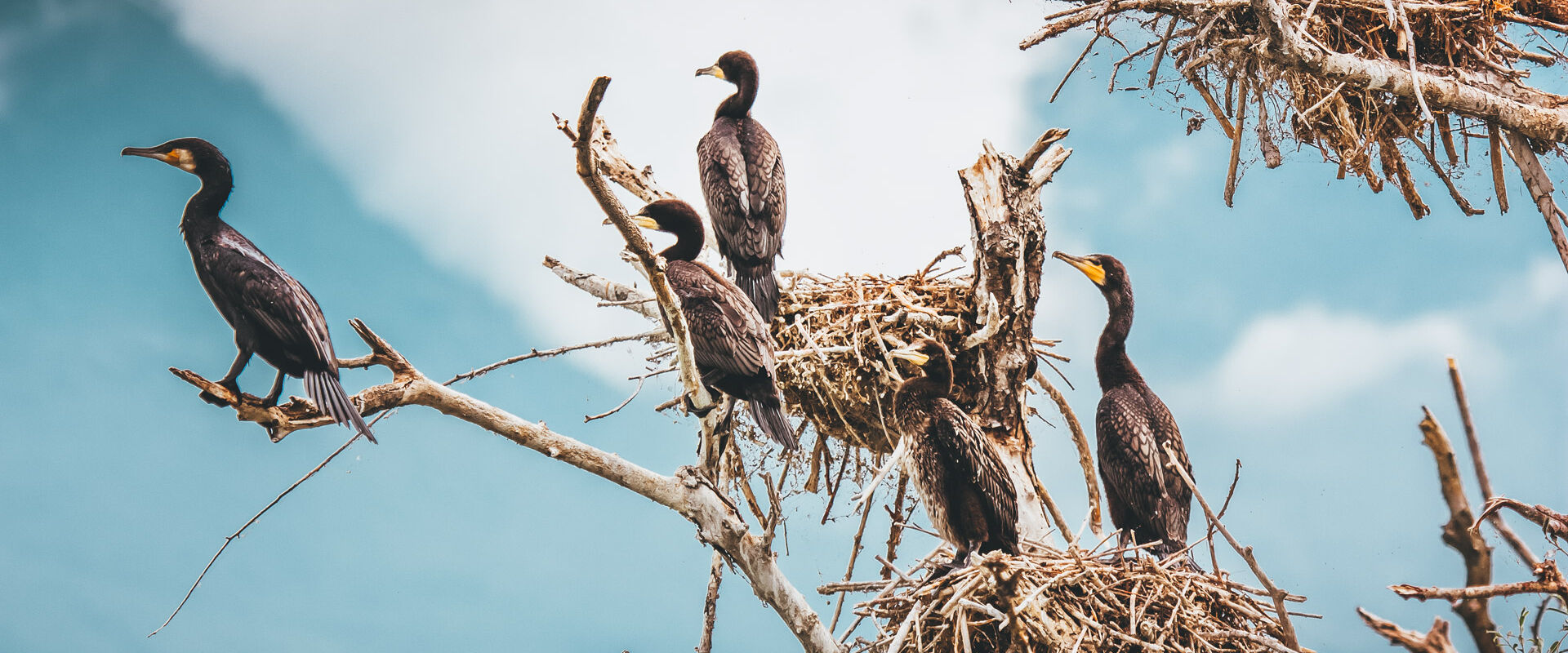No matter how many times I cross the Rio-Antirrio Bridge, I am always overwhelmed by the same feeling of euphoria, immediately followed by a sense of frustration…
“When we want to we can perform miracles… but how rarely this consummate brilliance comes to light”.
I drive around the bends of Paliovouna and observe Patra and the infinite blue of the Ionian. The road works for the brand new Ionia motorway, very soon to connect Antirrio to Ioannina, are diligently carried out and frequently visible from the existing road. “Another miracle”, I think.
After a short break in Amphilohia, it is northward bound again. And before I know it I am in Arta once more, standing before the famous bridge; a child again, entangling myth with reality; in my innocence, wrestling with the notion that the builder could actually sacrifice his own wife so that the bridge might stand. And what did we mean when we said… “they built it all day, it collapsed at night”?
The iconic bridge
The water of the Arahthos is in modest supply, as it now also depends upon the operation of a nearby dam for its flow. However, its languid movement only serves to draw the eye even more to the bridge’s iconic arches. Having survived a long and eventful history, it now takes its rightful place as the symbol of the city. Near it stand other beautiful landmarks that little by little reveal a vibrant multiculturalism. There is the Jewish district, the renowned mosque, the castle, the Byzantine churches, not to mention a lovingly constructed network of pedestrianized walkways in the town centre.
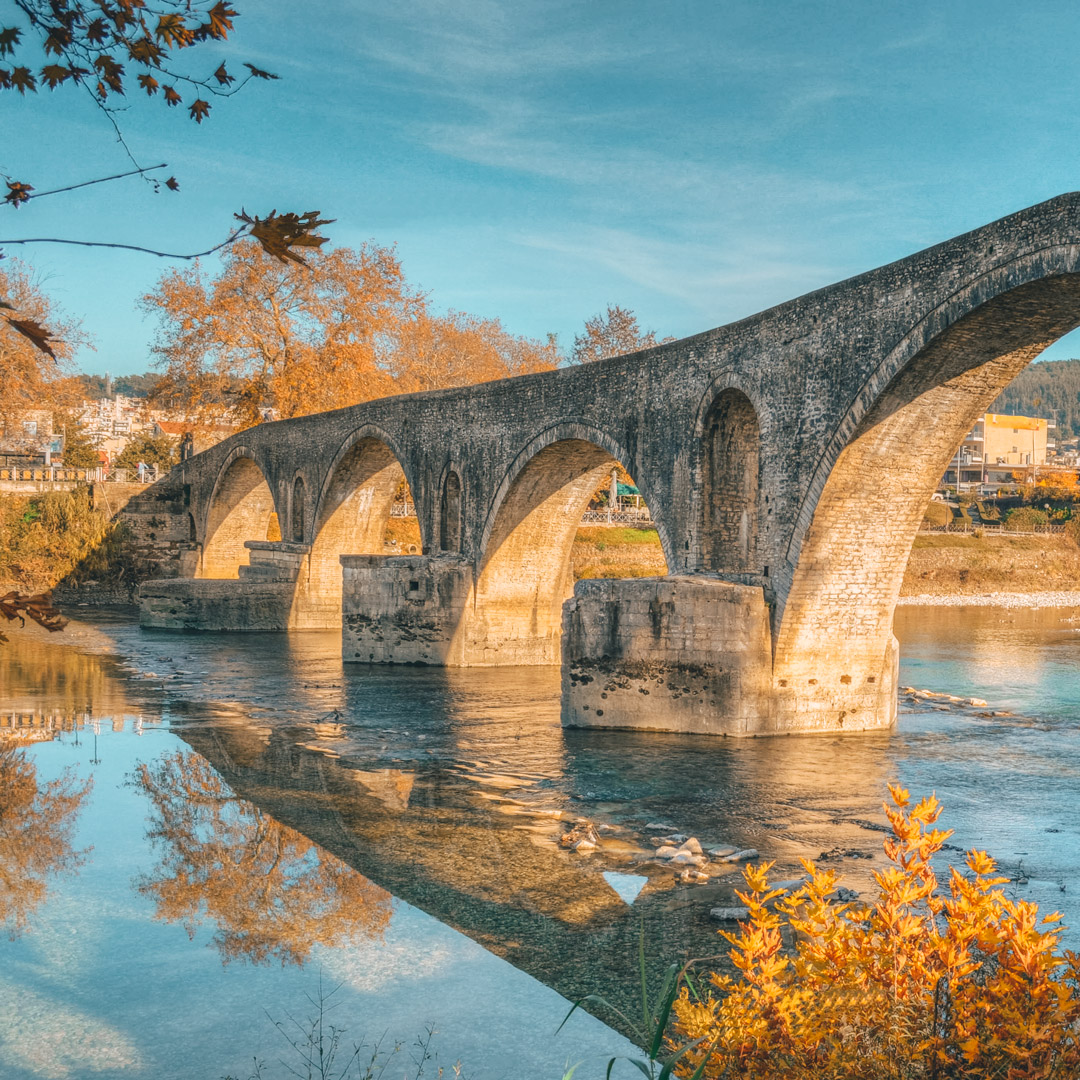
The city from head to toe
We leave the bridge and set out to explore a city that has had a steady population for 2,700 years. We head towards one of the most beautiful castles in Greece, built in the 13th century, and in an excellent condition today due to some painstaking restoration. Hotel Xenia, which I am told has been earmarked for a little restoration of its own, was built inside the castle, which mostly belongs to the Byzantine period but was founded upon an ancient fortification and also has Ottoman extensions. Wherever we go, we are asked if we have been to Panagia Parigoritissa, Greek for Virgin Mary the Comfort Bringer. Its epithet alone is enough to lead us to its doors as pilgrims.
A Byzantine temple, one of the most important in Greece, it lies within the compass of the town. It was built in the 13th century and around the 16th century actually served as a nunnery for a while. Services are held on very specific days of the year but it is open to visitors every day. Upon reaching the entrance, the building begins to radiate its special majesty. I spot the unique frescoes as well as the imposing dome. Time goes by and it’s the time of our lives; we simply can’t tear ourselves away. Under the plane tree, in the square, a few metres away, the people of Arta are enjoying their coffee; calm, polite, hospitable, each one of them.
Another very interesting church is that of Agia Theodora, with an impressive lifespan of 9 centuries. Going down the central Pyrrou Street, a little alleyway leads us to the courtyard of the historic temple. We are getting ready to leave now for destinations outside Arta, but first I want to pass by the wall of Ancient Amvrakia. The construction of the wall, by all accounts, started in the 6th century BC and was completed a whole two centuries later. A mood for relaxation has grabbed us now and the revitalizing thermal springs of Hanopoulos on the outskirts of the city are just the thing!
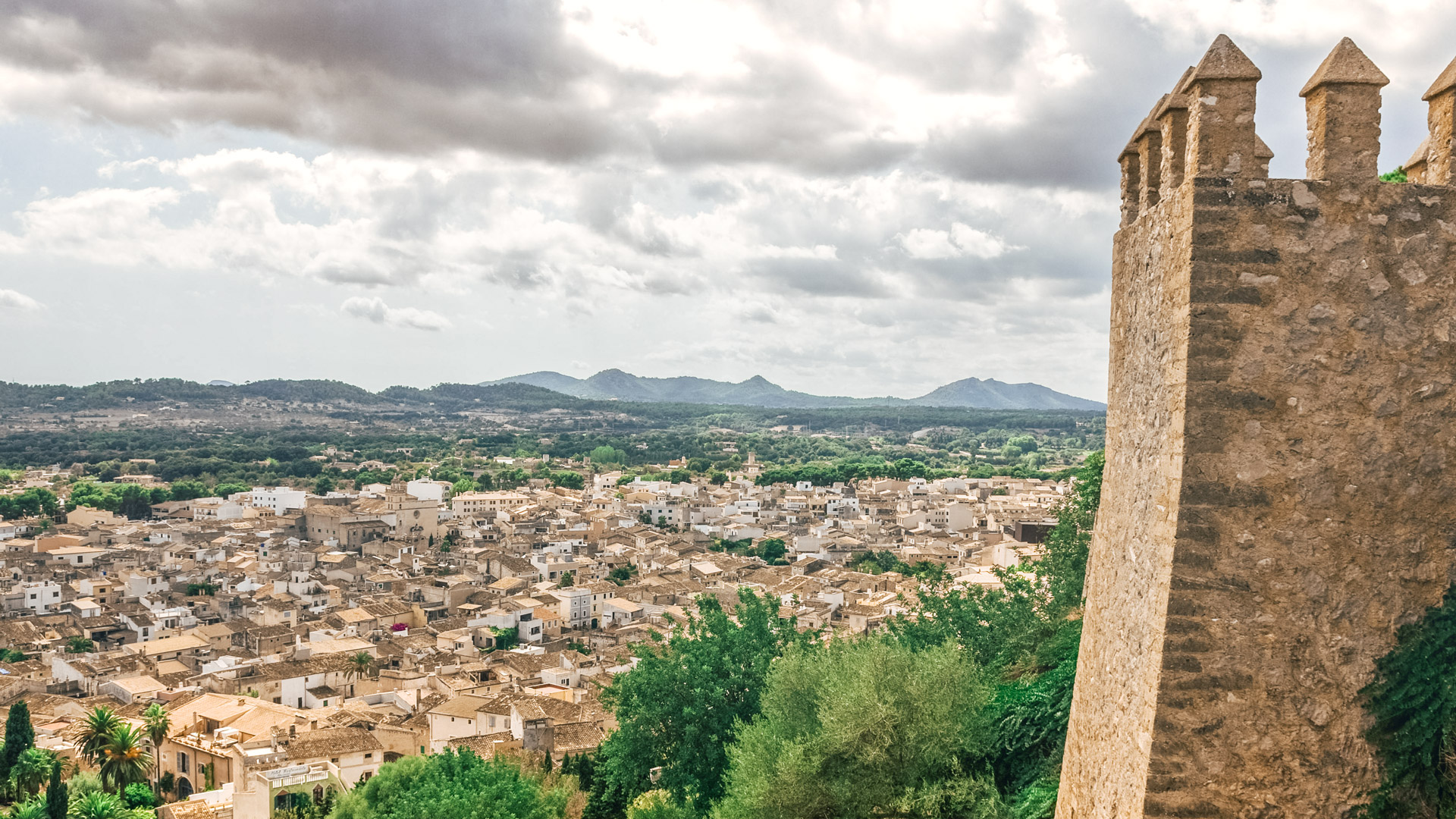
Koronesia, the undecided island
Koronesia is close by to Arta and it is a very special place. It could be an island but it isn’t. This tiny hamlet is connected to the mainland by a narrow strip of land known to the locals as the “ramma”, or “stitch”. A trick of the eye, maybe, but Koronesia appears to shift, as if by magic, between the lagoons Logarou and Tsoukalio. The further you venture into the Amvrakikos Gulf, the more you appreciate the true nature of a lagoon. The reeds on the shores, the windless coves, the marshes (we could even say swamps) and right at the end, when you least expect it, lush green slopes put the finishing touches on an experience that’s full of surprises.
We reach Koronesia at nine o’clock in the morning and head towards the harbour. Some small boats are just returning and we are there in time to see them remove the fish from their nets. We talk to Manolis about the challenges they face. One boat after another starts to turn up. We don’t ask about the catch because it is bad luck! However, Amvrakikos is regarded as one of the richest lagoons of the country, being home to plaice, mullet, sea bass, bream, eels, shrimp and cuttlefish. Besides the fish, no less than one third of the total population of aquatic birds of the country spends their winter in the area. Also, around 35 pairs of the rare and endangered Dalmatian pelican nest in the lagoon of Tsoukalio. The warm, shallow and nutrient-rich water is the ideal place for the reproduction of a lot of species of sea fauna.
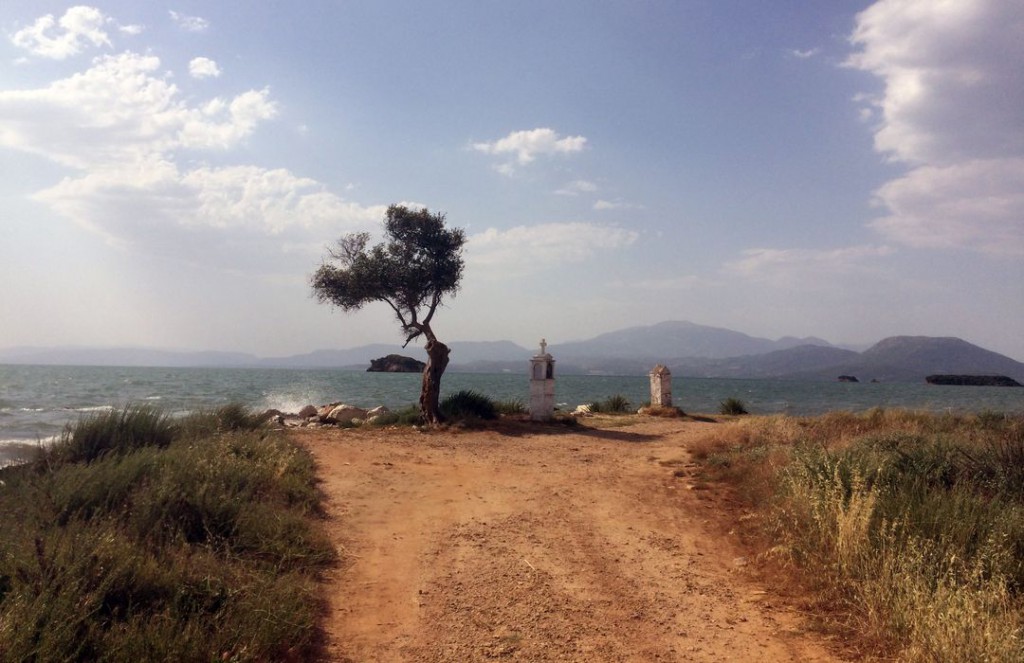
Heading to the mountain
I wake up in Arta and I still have images in my mind from our tour of Koronesia the day before. Today we are going to the mountains. We head towards Rodavgi, a mountain village that has lost nothing of its authentic vivacity despite the march of time. It’s Sunday morning, it has taken us about 30 minutes to drive there and when we arrive, we visit the temple of Agia Paraskevi which was built in 1804 and is located in the central square of the village.
We spend quite some time in the square where the villagers drinks their morning coffee after church. We are given a guided tour of the folklore museum and then we walk to Besico spring and wonder about the origin of its name. A shady canopy of plane trees, cooling water, absolute quiet… Rodavgi with its beautifully maintained guesthouses can be an ideal springboard for getting to know the area. Mountains, rivers, activities for the adventurer and eco-tourist all await.
“They built it all day, it collapsed at night.”
No matter how much you see, you still want to discover new things. Don’t miss out on the beauty that Arta and its surrounding area have in store. These beautiful images will inscribe themselves on your mind and settle in your soul. Crossing the bridge of Arta means entering into a love affair which could well last a lifetime!
